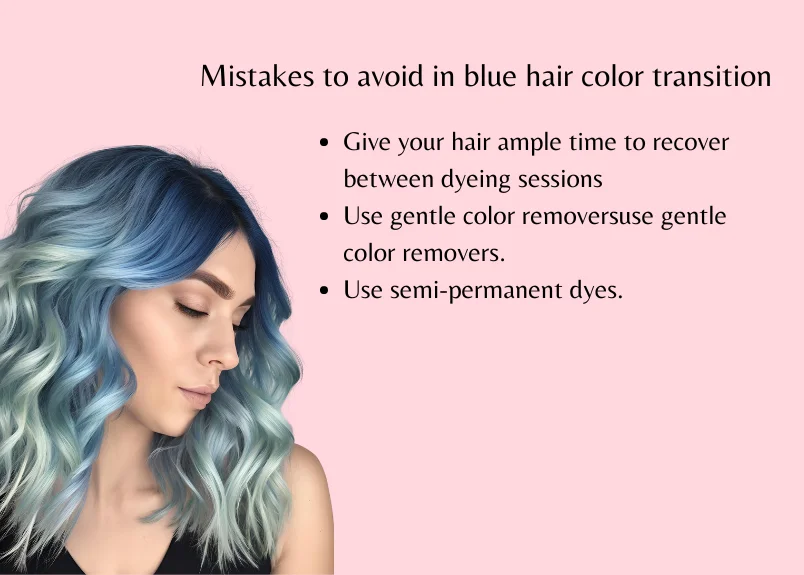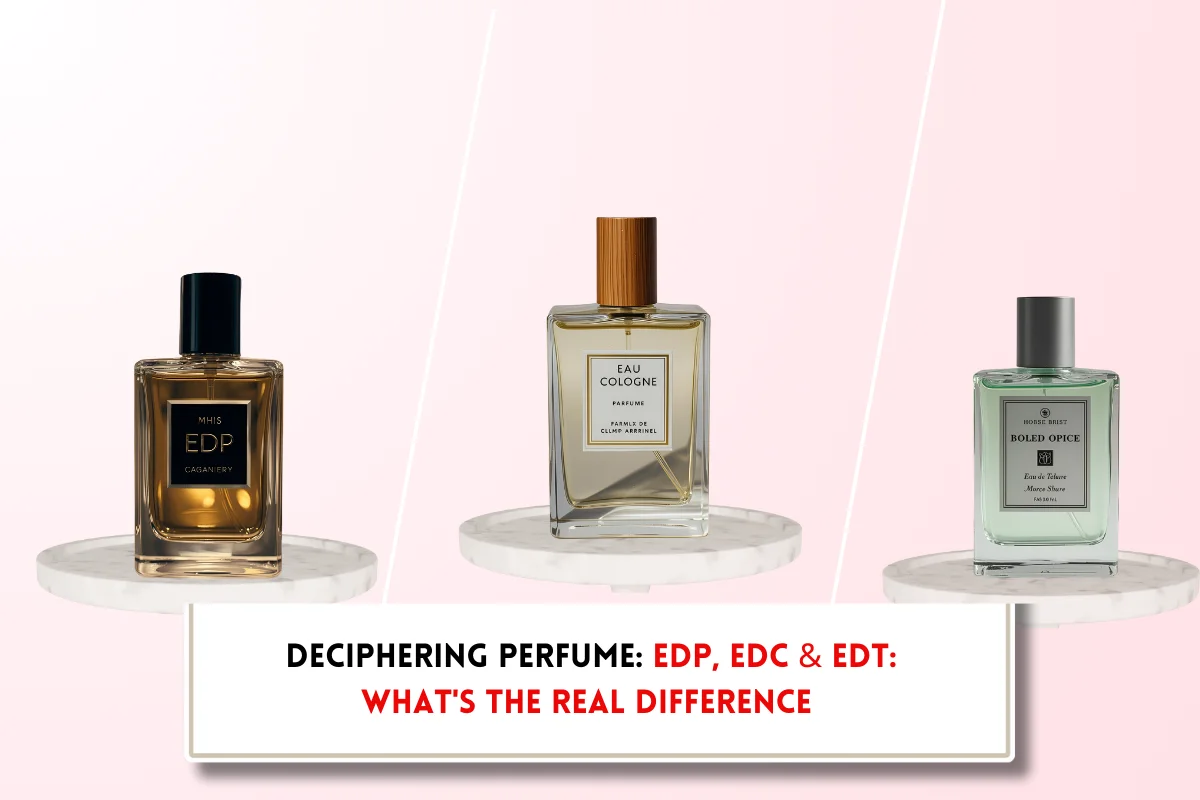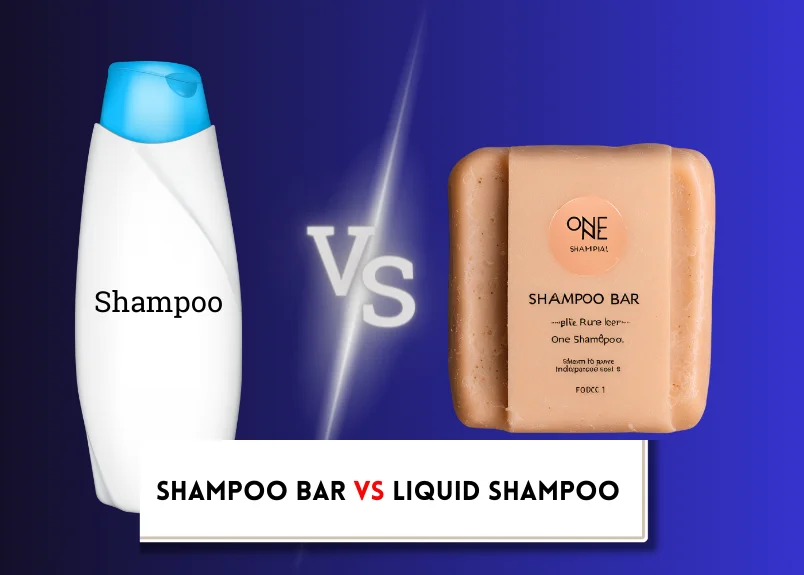What color can I dye my hair after blue hair?
At BeautyCaters, our expert team independently curates every recommended product. Purchases through our links may earn us a commission. Explore our transparent selection process.
You’ve rocked the blue hair look and now you’re ready for a change. But what color will look amazing after all that blue? The options might seem endless, but fear not! We’ve got you covered. So, put an end to the question “What color can I dye my hair after blue hair?” and explore some stunning hues that can seamlessly transition from blue to a fresh new look.
- The color theory
- The basics of hair color
- What are the different undertones of blue hair dye?
- What are the best colors to transition to after blue hair?
- What are the key factors to consider before dyeing your hair a new color?
- What are the best post-color treatments?
- What are the common mistakes you should avoid?
- Final Word: What color can I dye my hair after blue hair?

The color theory
Knowledge of color theory is crucial when transitioning from blue hair. The color wheel reveals how colors work together, showcasing complementary and analogous hues. Complementary colors, located opposite each other on the wheel, create striking contrasts, while analogous colors offer a more harmonious appearance. This knowledge will guide your choice for the perfect post-blue hair dye job, whether you’re aiming for a bold statement or a subtle shift.
The basics of hair color
Primary colors (red, blue, yellow) combine to create secondary colors (green, orange, purple), while tertiary colors result from mixing primary and secondary hues. Transition from blue hair requires thoughtful navigation of this color spectrum, and selection of a new shade that complements or contrasts effectively. A careful consideration of these principles helps you achieve a seamless and stylish hair color transformation.
Also Read: How soon can I swim after coloring my hair?
What are the different undertones of blue hair dye?
Blue and Its undertones
In the transition from blue hair, it’s essential to recognize the specific shade of blue and its underlying undertones. Blue varies from vibrant cobalt to soft pastels, each with distinct green, violet, or gray undertones. These undertones are crucial in determining which colors blend or transition seamlessly after blue. For instance, a blue with green undertones pair well with warm shades, while the one violet undertones might resonate better with cooler colors. Here are some popular blue shades and their implications for future colors:
- Cobalt Blue: Pairs well with warm colors like copper or gold.
- Pastel Blue: Works beautifully with soft pinks or lavender.
- Navy Blue: Transition to lighter cool tones like silver or ash.
- Teal: A versatile shade that can lead to both greens and blues in the spectrum.
Light blue tones and fading
Lighter shades of blue tend to fade more quickly, often resulting in a pastel-like hue. If your hair has faded to a very light blue or even a silvery tone, transitioning to a new hair color is easier as the previous blue won’t interfere as much.
Consider the current state of your hair and the level of fading when choosing a new color. Light blue tones that have faded substantially offer more flexibility, as they are less likely to significantly alter the final result.
Dark blue and persistent pigments
Dark blue hair may contain persistent pigments that can be difficult to remove completely. Strong pigments in dark blue dyes can linger in the hair for an extended period, even after repeated washes and treatments. This hinder transition to a different color, as the underlying blue pigments may interfere with the desired outcome.
The persistence of dark blue pigments limits the range of colors you can easily transition to without encountering unwanted undertones or color clashes. It’s crucial to consider the level of stubborn pigments present in your hair when choosing a new hair color, as this will influence the success of the dyeing process.
What are the best colors to transition to after blue hair?

Some people love the adventurous and bold statement of blue hair, but eventually, you may find yourself ready for a change. Whether you want to go lighter, shift to another bold color, or return to natural tones, there are plenty of options for your next hair color after blue.
Going lighter: Pastels and blondes
One option for transitioning from blue hair is to go lighter with pastel shades or blonde tones. Pastel colors like lavender, mint green, or baby pink can create a soft and whimsical look, while blonde hair can give you a fresh and bright style. Keep in mind that lightening your hair after having a blue shade may require multiple sessions with a professional colorist to achieve the desired result without causing excessive damage to your hair.
Shift to bold color
Pastels and blondes not your style? No problem! If you’re feeling bold and adventurous, consider shifting to another vibrant hair color like purple, teal, or even a fiery red. These colors can make a striking statement and allow you to express your individuality in a whole new way. Going from blue to another bold color can be an exciting transformation, and it’s important to work with a skilled colorist to ensure a smooth transition and optimal hair health.
Going for a bolder color after blue hair can be a fun and daring choice, giving you the opportunity to showcase your personality and creativity. Whether you opt for a deep purple or a vibrant red, the key is to choose a shade that complements your skin tone and personal style.
Ombre, balayage
Techniques such as ombre, balayage, and full dye can create various results. Ombre gives a gradual color transition, while balayage offers a more natural, sun-kissed look. Full dye provides a uniform color change. Each method caters to different aesthetics, so be sure to choose one that aligns with your style. A well-planned color transition enhances your vibrancy and keeps your locks healthy. With the right technique, you’re sure to achieve stunning results that reflect your personal style
Return to natural tones
Options for returning to natural tones after blue hair include going back to your original hair color or transitioning to a softer, more natural-looking shade. This could involve blending the remaining blue tones into a rich brunette or warming up your hair with subtle caramel or honey highlights. Returning to a natural hair color after a period of bold, blue hair allows for a more understated and classic look.
Shifting to a natural hair color after sporting blue locks gives you the chance to embrace a more low-maintenance style and let your hair’s natural beauty shine through. It’s important to consult with a professional colorist to ensure a seamless transition and proper care for your hair during the process.
What are the key factors to consider before dyeing your hair a new color?
For those considering a color change after having blue hair, there are some critical considerations to keep in mind. The process of transitioning from blue to a new color can have a significant impact on the health and integrity of your hair, as well as the long-term maintenance and upkeep requirements.
- Hair health and integrity: Considerations for hair health and integrity are crucial when contemplating a color change. The transition from blue to a new color often involves the use of bleach or other harsh chemicals to strip away the previous color. This process can result in damage to the hair shaft, leading to dryness, breakage, and overall compromised hair health. It’s important to assess the current condition of your hair and consult with a professional stylist to determine the best course of action for a safe and healthy color transition.
- Assess hair condition: Evaluation of your hair’s health determine if it’s ready for a new dye application. Examine the texture: “Is your hair feeling dry or brittle?”, elasticity: “Does it stretch and return without breaking?”, scalp health: “Is your scalp itchy or flaky?”, previous hair damage: “Have you experienced significant fading or color loss?” This help to decide on next steps.
What are the best post-color treatments?
To minimize potential damage during the color transition process, it’s essential to implement specific hair treatments. Incorporating these into your routine will prepare your hair for the upcoming color change. Invest in:
- Deep conditioning treatments: These treatments restore moisture levels, while protein treatments help rebuild and strengthen your hair.
- Hydrating masks: These nourish your hair, replenishing moisture lost during the dyeing process.
- Protein treatments: They repair structural integrity, especially if your hair feels weak or limp.
- Leave-In conditioners: They provide ongoing hydration and protection post-treatment.
- Sulfate-free shampoo: Helps preserve color by avoiding harsh stripping.
- Color-protecting conditioner: Provides hydration and locks in color for a vibrant appearance.
- UV protection spray: Shields hair from sun damage, preventing color fade and dryness.
- Root touch-ups: Schedule touch-ups at least every 6 to 8 weeks to combat root growth and fading. Touch-ups ensure the color remains consistent, vibrant, and fresh from root to tip.
What are the common mistakes you should avoid?

Transition from blue hair requires careful consideration to avoid common pitfalls that could damage your hair or ruin your color. Many people rush the process or over process without understanding the effects of their choices. This can lead to dryness, brittleness, and significant damage. To avoid this, ensure you allow your hair ample time to recover between dyeing sessions, use gentle color removers, and consider semi-permanent dyes that cause less stress on your hair.
Final Word: What color can I dye my hair after blue hair?
After experimenting with vibrant blue hair, it’s natural to explore new color options. The transition to a new shade can be exciting and transformative. Consider your skin tone, personal style, and desired level of change when selecting your next hair color. Consulting with a professional colorist can provide personalized recommendations and ensure a seamless transition from blue to your chosen hue.










